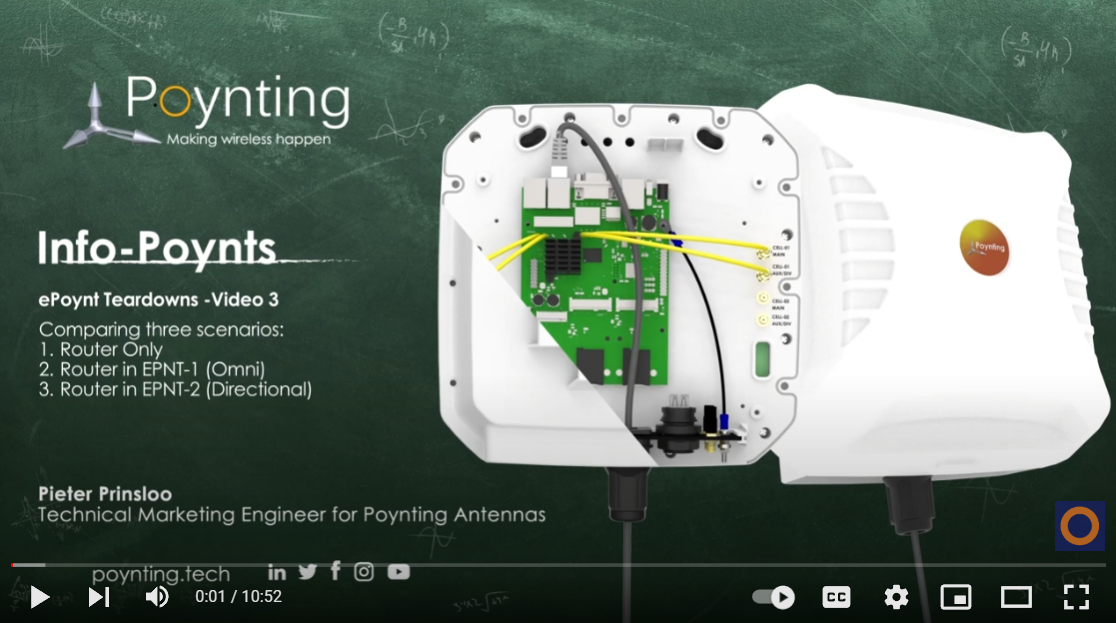An Outdoor Antenna, the ultimate win!

“Move the antenna and router next to each other, like in our ePoynt
range of enclosures and you hit the internet jackpot.”
We have often shown theory, and with 1000s of actual “indoor vs outdoor” measurements that there is roughly 10 to 20 dB signal increase SIMPLY by moving your antenna OUTDOORS. This can even be found when mounting the antenna against the inside of a clear window when the window faces in the direction of a mobile tower. Sounds like we are insulting our own products, but the largest “win” is not caused by a POYNTING (or any other antenna).

IT’S DELIVERED BY THE MODEM BENEFITTING FROM MASSIVELY CLEANER, STRONGER OUTDOOR SIGNAL.
Andre comments is on this video (https://youtu.be/IyY1kDR3_3o) where Pieter Prinsloo compares the results of a router, the EPNT-1 and EPNT-2 with each other.
From Andre:
“A good antenna” (one with consistent beam shape, gain AND maintaining both at all/most mobile bands) DOES additionally add (3 to 12 dB) to that number. You have also shown in earlier video the additional 3 to 7dB further improvement when using an ePoynt antenna which allows the modem to “live” right behind the antenna which cuts out cable loss.
I have a wordy discussion below stating danger of real life tests but regardless of these I commend this carefully done case study which does succeed in providing “real life” confirmation and regardless of my misgivings about such anecdotal cases. Excellently done and perhaps my only comments related to discussion below is the fact that it seems that you are maybe in a too strong signal aria which “caps” performance at around 25 Mb/s which “hides/reduces” the full possible increase in SPEED MEASUREMENTS. The SNR increases REALLY show the differences and should you have been in much weaker signal area increased data rates of 10x or more can be expected with such higher signal strength.
Below interesting but optional:
I do know regardless how often I may advise against it real people NEED and BELIEVE in “seeing it work in practice” (this may excludes engineers like myself since we’re don’t count as real people – we’re mostly nerds struggling to relate to people and failing 🙂).
The reasons I “hate” real life tests can be summarised as follows:
- One operator frequency
- All antennas are equal
all antennas are equal when cell signal is strong - Antenna gain/pattern performances
only seeing antenna gain/pattern performance at one frequency/direction make 90% of “real” tests meaningless or even misleading
Basing decisions on real life tests alone can easily cause the WRONG antenna selection, can waste lots of money and can cause many people worldwide not to get the connectivity they deserve!
The ONLY proper way of assessing antenna performance is by REAL pattern measurements in controlled environment over all frequencies. Preferably trustworthy and detailed measurements that are provided by reputable manufacturers. It’s good that customers who are capable or can afford their own measurements confirm the supplied data and let the world know if they are unreliable.
It’s still not simple to select antennas based on detailed technical info and for many people it is easier to use a proven, reputable brand, like a POYNTING antenna.

